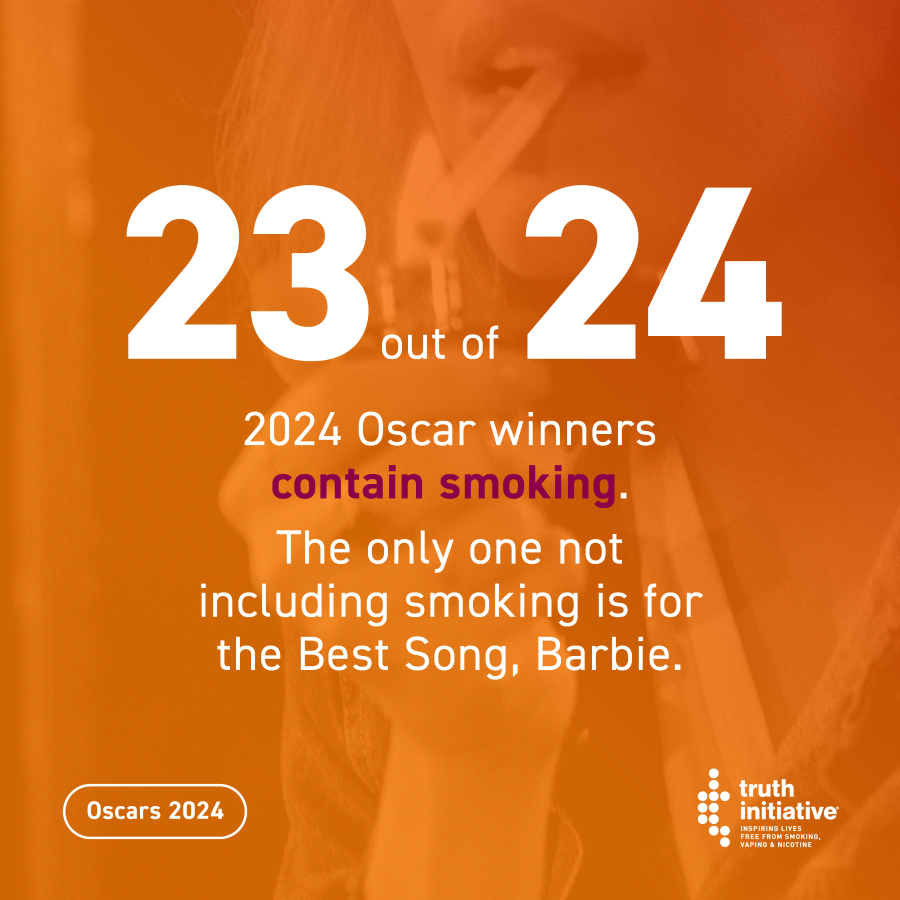
Lights, Camera, Tobacco!
From the red carpet to our televisions, we celebrate the glamourous fashion, artists and filmmakers that come together for the biggest award ceremony of the year, The Academy Awards! Commonly referred to as The Oscars, this celebration recognizes the excellence in cinematic achievements and this year marks the 96th Oscars, hosted by the talented guest speaker Jimmy Kimmel.
Despite the dazzle and excitement of the Oscars, there is a hard truth that needs the spotlight, TOBACCO IMAGERY. Let’s pull back the curtain and expose just how much tobacco dominates the screens. BREATHE’s Smoke-free Screens program screened all 38 Oscar nominated films and found a startling 26 films contained tobacco depictions. The Oscars awarded 24 categorical winning films. Our analysis found that 23 out of 24 films contained tobacco imagery. According to Truth Initiative, 95% of Oscar winning films depicted tobacco use. In other words, over 66% of nominations had tobacco depictions and 95% of films with tobacco took home the wins. A winning film with tobacco usage is a win for Big Tobacco.
Oppenheimer took home the most wins in six categories including Best Picture and Best Director, but this film was the top tobacco branding violator and depicted heavy tobacco use featuring the brand Lucky Strike. While the film was based on the historical figure Oppenheimer, a documented heavy smoker, the film itself has over 120 incidents of tobacco imagery.
Jimmy Kimmel also refers to a specific brand of tobacco during his opening monologue, “Before this movie, you would have a better chance getting my wife to buy my daughter a pack of Marlboro Reds than a Barbie doll.” From smokey screens to normalizing tobacco dialogue, it begs the question: how is tobacco still normalized among pop culture?
Youth tobacco exposure is not a phase. Focusing efforts on preventing teen vaping is not a trend. The amount of tobacco imagery in Top Box Office hits and Oscar awarded films needs to be addressed. Based on this year’s smoking imagery data, tobacco in films is not going away, continuing the likelihood of tobacco use by youth due to exposure on screen. By bringing to light the startling amount of tobacco on the big screen and continuing the conversation about keeping tobacco out of films, we can keep up the good fight protecting our youth from the desensitization and normalization of tobacco imagery. The entertainment industry can do better and our volunteers will continue to hold filmmakers, influencers and studios accountable.
Author: Savannah Olivier